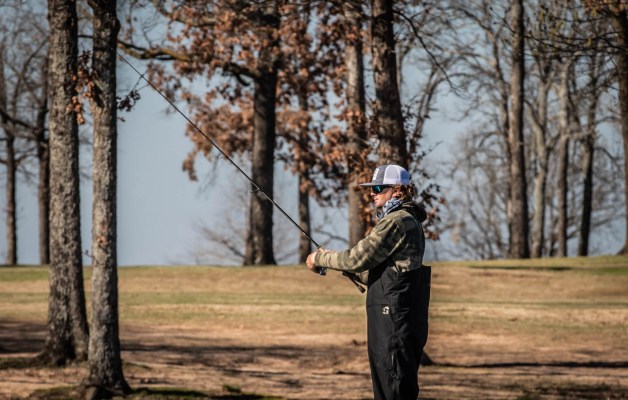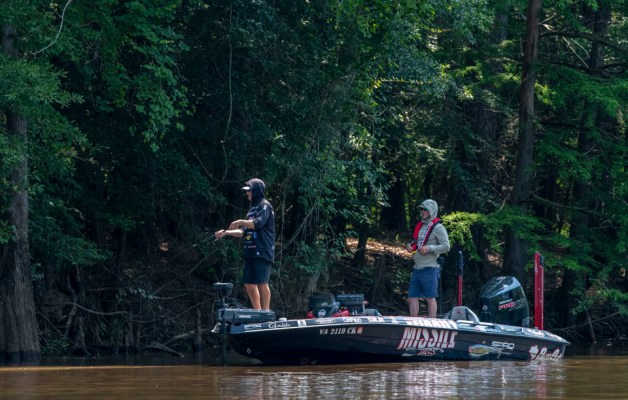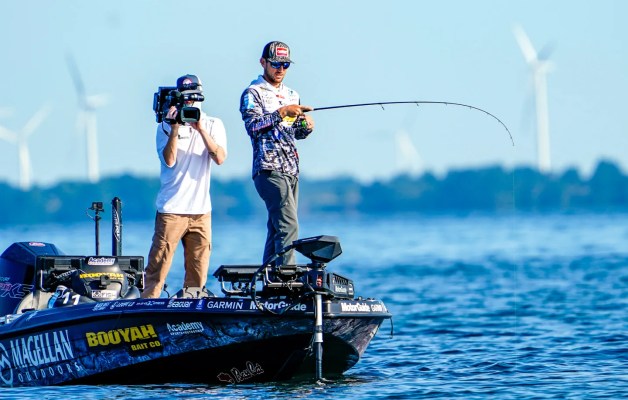November means two things to me: big bucks and big bass.
When I’m not hunting in Michigan, I want to be scouring southern reservoirs because this is an excellent time and place to catch a giant.
As I noted in a blog a few days ago, bass move into the backs of creeks in October, and shallow cranking is the deal. That tactic will catch big fish, but it’s more about numbers and lots of action.
But once the water temperatures settle into the low 60s and mid 50s and the lakes are being drawn to winter pool, big fish go on the prowl from South Carolina to Texas. That’s when I rig four baits and target bigger bass that are feeding on big shad up shallow.
Here’s a look at each of those baits and when and how I fish them. Keep in mind that on any given day, I may have all of these baits in play.
Big thumper spinnerbait
This is my first choice in many instances because I can fish it at all levels, from waking it near the surface to a couple of feet down, depending upon water depth and the mood of the bass.
I’ll fish it along chunk rock banks or around laydowns and grass.
I like 1/2- to 3/4-ounce spinnerbaits with big blades; either a big thumper, double Colorado combination or a pair of big willow blades, depending upon the water clarity. If stained, I opt for the Colorado combination and will upsize the rear blade so it moves a lot of water and will dress it with a Strike King Rage Tail Grub to increase the overall profile size.
If the water is clear, I’ll use the double willow combination. I’ll throw shad patterns because that’s what the fish are keying on — white if the water is clear or chartreuse/white if it’s stained.
Buzzbait
Anytime there are a lot of shallow targets in the water, I will be reaching for the buzzbait. It’s a phenomenal choice for fishing over milfoil, hydrilla or lily pads. I’ll even work it over large ledge rocks along the bank.
The spinnerbait is a good choice if it’s windy, but the buzzbait is more effective when the water is slick calm.
I fish the buzzbait just fast enough to keep it on the surface. Buzzbait performance isn’t about speed; it’s about making a commotion and staying in the strike zone longer. That’s why I fish the lure tight to a rocky bank, on the edge of a grass line, or over the outline of a log. I usually throw a 3/8-ounce KVD model with a gold blade or a Strike King Premier Model with a nickel blade.
The key to a good buzzbait is how it squeaks, a feature you can enhance with a couple of minor modifications.
First, crimp the rivet right behind the blade so it can’t spin on the shaft when the bait rubs against it. I also “rough up” the back of the rivet with a file to make it squeak louder as the blade turns against it.
I prefer black-skirted buzzbaits during low light periods or if the water is stained. If the water is dark, I will dull up the shine of a blade with a Sharpie pen. It still gives off a little flash, but more importantly, provides a dark silhouette.
If the water is clearer and sky is bright, I use a white or chartreuse/white skirt and nickel blade.
Big crankbait
If the water is dirty (a foot or less of visibility), I like a KVD 2.5 Square Bill crankbait because it moves a lot of water and deflects well off cover. Dirty water puts fish shallower, and that bait triggers reaction strikes. My favorite color is chartreuse/black back.
Swimbait
This is a niche bait, yet one that will catch giant bass in ultra clear water under windy conditions.
In clear water, bass can get too good of a look at the other baits I mentioned, so the swimbait provides a more natural appearance, especially if there is some wind.
I will fish a shad-colored Shadalicious in 4 1/2- or 5-inch, depending upon the size of bass in the area. If fishing around a lot of cover, I’ll rig it with a Mustad belly-weighted hook and weedless (Texas style). If I’m fishing over rocks or where cover is sparse, I’ll put it a 1/4-ounce jighead and leave the hook exposed.
I fish the swimbait with a slow steady retrieve, imitating a big shad moving through the strike zone.
Other techniques will catch fish this time of year, but these larger fast movers are the ones that appeal to big bass most.
Wouldn’t you rather catch a few 4s, 5s, and 6s than a sack of dinks?
(Kevin VanDam’s column appears weekly in Bassmaster.com You can also find him on Facebook and Twitter.)





